If you’re planning a kitchen remodel you might want to consider incorporating a butcher block kitchen island. Their wooden charm brings warmth and character to any room, making them a popular choice among homeowners.
Keep reading to learn all about butcher block islands and make an informed decision that enhances both your kitchen’s aesthetics and functionality.
Table of Contents
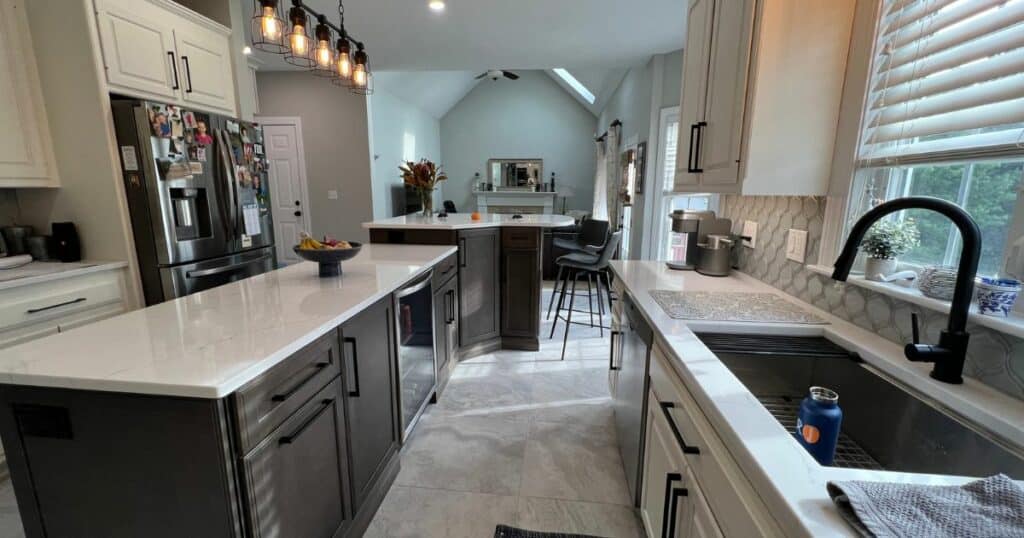
What are Butcher Block Kitchen Islands?
A butcher block kitchen island is a sturdy and durable surface that is typically used as a kitchen workspace. It is constructed from materials of thick, solid pieces of wood that are glued together, creating a robust and resilient island top that can withstand chopping, cutting, and slicing from a kitchen tools and utensils.
Butcher block kitchen islands and kitchen carts are a mainstay in many kitchens due to their durability, versatility, and beauty.
Incorporating a butcher block kitchen cart is also an opportunity to determine when remodeling your kitchen.
Now, let’s look at the different types of butcher block syle grains and their key features.
1. End-Grain Butcher Block Kitchen Islands
An End-grain butcher block is crafted by arranging wood blocks so that their cut ends face upward, these islands boast a striking mosaic-like pattern that instantly captures attention.
Key Features:
- Knife-friendly surface due to wood fibers naturally separating.
- Self-healing properties that help maintain a smooth surface over time.
- Distinctive and captivating appearance that adds character to your kitchen.
2. Edge-Grain Butcher Block Kitchen Islands
Edge-grain butcher block strike a harmonious balance between aesthetics and practicality. These islands are crafted by arranging wood pieces with their long sides facing up, creating a sleek and visually appealing surface.
Key Features:
- Attractive and streamlined appearance that complements various kitchen styles.
- Sturdy construction suitable for various culinary tasks.
- Cost-effective option without compromising on quality.
3. Face-Grain Butcher Block Kitchen Islands
Face-grain butcher block showcase the natural beauty of wood grains, making them a favored choice for those who appreciate simplicity and elegance. These islands are created by arranging wood pieces with their wide sides facing up.
Key Features:
- Showcases the natural aesthetic of wood grains for a timeless and elegant look.
- Well-suited for light to moderate food preparation tasks.
- Offers a warm and inviting atmosphere to your kitchen space.
4. Hybrid Butcher Block Kitchen Islands
Hybrid butcher block kitchen islands take kitchen innovation to new heights by combining different types of wood grains and construction methods. These islands often feature a mix of end-grain, edge-grain, and face-grain patterns, resulting in a visually dynamic and functional work surface.
Key Features:
- Unique and personalized designs that cater to individual preferences.
- Versatility in terms of aesthetics and performance.
- The opportunity to experiment with various wood types and patterns.
5. Reclaimed Wood Butcher Block Kitchen Islands
For the environmentally conscious and those who appreciate rustic charm, a reclaimed wood material is an fantastic choice. Crafted from salvaged or repurposed wood, these islands tell a story through their weathered textures and unique imperfections.
Key Features:
- Eco-friendly option that reduces demand for new wood resources.
- Distinctive character and history embedded in the wood’s patina.
- Adds a touch of vintage and authenticity to your kitchen space.
6. Customized Butcher Block Kitchen Islands
Customized butcher block kitchen islands allow you to bring your culinary dreams to life. Work with artisans and craftsmen to design a kitchen that perfectly suits your needs.
Key Features:
- Tailored to your individual preferences and kitchen requirements.
- Offers the opportunity to express your artistic vision and have your kitchen island stand out.
- Collaborate with experts to create a functional masterpiece that aligns with your vision.
Maintenance and Care Considerations Across Types
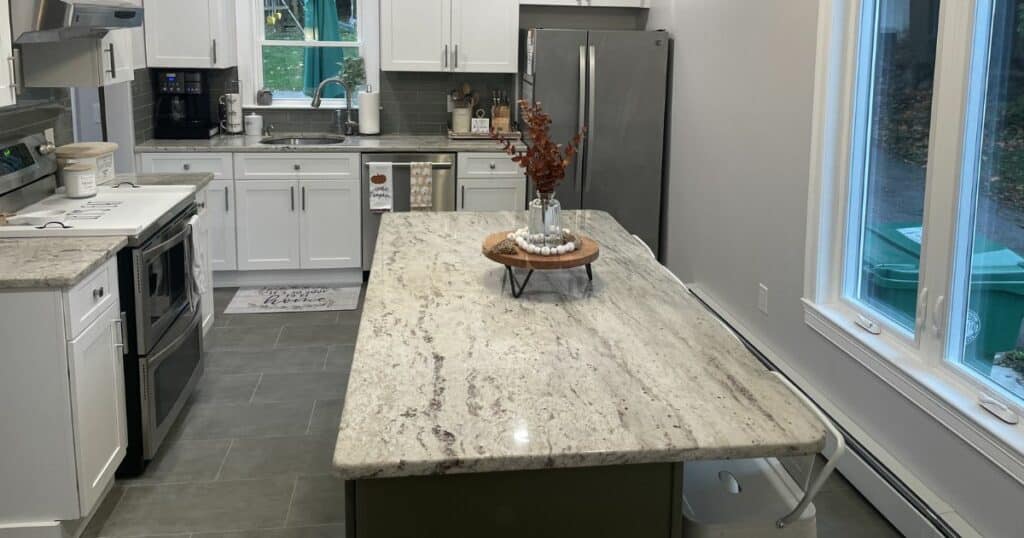
To ensure that your kitchen islands can withstand the test of time and maintains its beauty, proper maintenance and care are essential.
Regardless of the type of butcher block material that you have, there are fundamental maintenance practices that apply universally:
- Regular Cleaning: After each use, clean your butcher block kitchen island with mild soap and warm water. Avoid harsh chemicals that can strip the wood’s natural oils.
- Avoid Soaking: Do not soak your butcher block kitchen island in water, as excessive moisture can cause warping, splitting, or mold growth.
- Prompt Drying: Wipe the surface dry immediately after cleaning to prevent moisture from seeping into the wood.
- Cutting Board Hygiene: If you use your butcher block kitchen island as a cutting surface for your knives, sanitize it regularly with a mixture of water and white vinegar or a food-safe disinfectant.
Different types of butcher block kitchen islands come with unique challenges that require specific attention:
- End-Grain Islands: While end-grain construction is durable, it’s still susceptible to knife marks. Regular sanding and refinishing may be needed to keep the surface smooth and uniform.
- Edge-Grain Islands: Edge-grain islands may show scratches more prominently. Use cutting boards or trivets to prevent direct contact with hot pots and pans, and consider sanding and oiling to restore the surface of the butcher block top.
- Face-Grain Islands: Face-grain construction is more prone to showing cut marks and wear. Take care to use gentle cutting techniques and consider using reversible surfaces to extend the island’s lifespan of the butcher block top.
Regular oiling is a vital component of maintaining any butcher block kitchen island. Food-safe mineral oil or specialized butcher block conditioner should be applied every few weeks, or as needed, to prevent the wood from drying out, cracking, and becoming susceptible to moisture.
Refinishing, which involves sanding down the surface and reapplying oil, should be done periodically to keep your butcher block kitchen island looking and performing at its best. Note though, the frequency of refinishing will depend on usage and wear, but it’s generally recommended every few months to a year.
Choosing the Right Butcher Block Kitchen Island for Your Kitchen
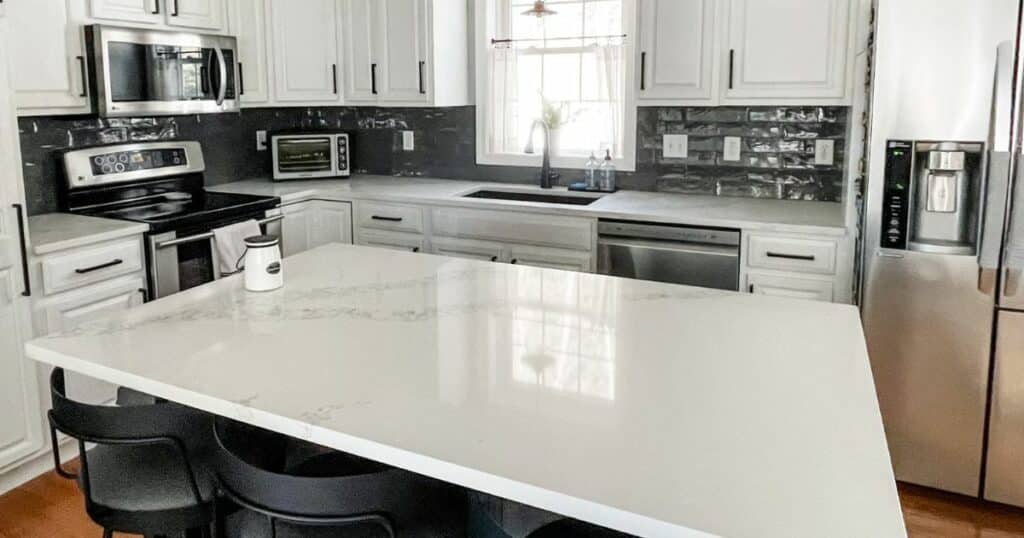
Selecting the perfect butcher block kitchen island for your kitchen involves a thoughtful blend of functionality, aesthetics, and practicality. With a variety of options available, it’s essential to take several factors into consideration to ensure your chosen island seamlessly integrates into your culinary space and storage.
Along with choosing a style grain, you will also have to decide what the island’s paint, material, color and storage space will be. Kitchen shelves and drawers offer different storage spaces, which is important to determine since a kitchen remodel can be a costly price.
Various materials for butcher block islands include: walnut, steel and maple.
Start your selection process by evaluating your cooking habits and requirements. Consider the following:
- Culinary Activities: Do you frequently chop, slice, and dice ingredients? This offers exceptional knife-friendliness and durability.
- Entertaining: If you often host gatherings or enjoy cooking for a crowd, a larger island with ample workspace is a practical choice.
- Multifunctionality: Will your island serve as a prep station, dining area, or storage space? Assess your needs to determine the size and features that best suit your lifestyle.
The layout and available space in your kitchen play a significant role in choosing the right butcher block kitchen island:
- Island Sizes: Measure your kitchen to determine the appropriate island size. Ensure there’s enough clearance around the island for comfortable movement.
- Placement: Decide where you want to place the island. Consider factors like traffic flow, proximity to other work areas, and access to utilities.
Your kitchen is a reflection of your personal styles, since your butcher block kitchen island should harmonize with your design aesthetic:
- End-Grain Elegance: If you appreciate intricate craftsmanship and want a standout piece, an end-grain island with its mosaic pattern is an ideal choice.
- Sleek Simplicity: For a modern and streamlined look, consider an edge-grain island that balances aesthetics and function.
- Natural Charm: Opt for a face-grain island if you love the warm and inviting appeal of natural wood grains.
Balancing your budget with the island’s longevity is crucial:
- Investment vs. Cost: While end-grain islands may come with a higher upfront cost, their exceptional durability and long lifespan make them a valuable investment for the price.
- Affordability: Edge-grain and face-grain islands offer budget-friendly options without compromising on quality.
- Maintenance Costs: Keep in mind that regular oiling and maintenance are essential for preserving your butcher block island’s condition, regardless of the type.
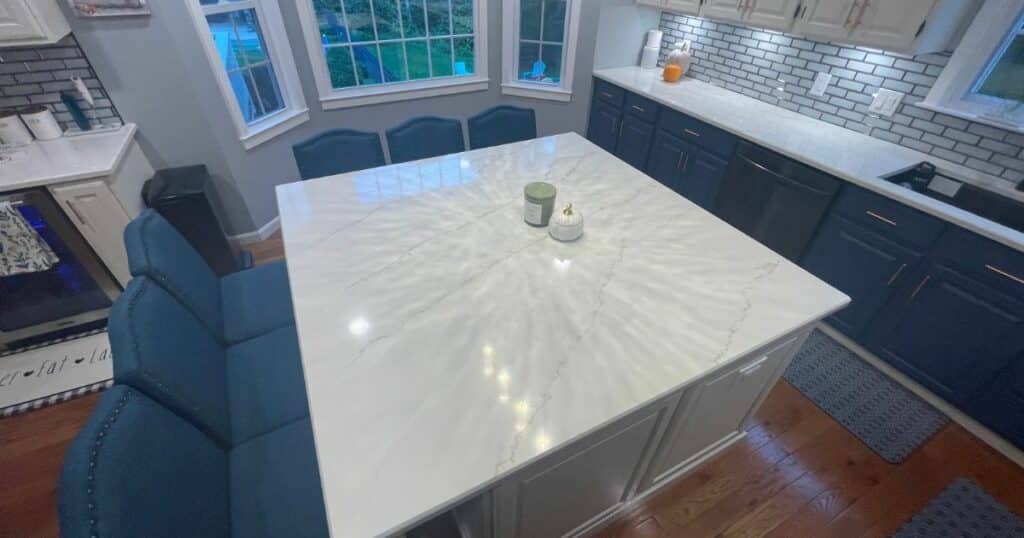
Contact Bonsai Builders To Discuss Your Kitchen Remodel!
As you consider the transformation of your kitchen, the inclusion of a butcher block island can be a defining choice.
If you’re ready to transform your kitchen and are thinking about including a butcher block island, we’re here to bring your dream to life. Bonsai Builders is here to create a design you’ll absolutely love. Contact us today to discuss a project!
Our Content
Our experienced contractors and design specialists carefully review and edit all content ensure it meets our high standards for quality and accuracy. We do this to provide our readers with content that is accurate, reliable, and up-to-date. Bonsai Builders is a trusted source across Massachusetts for kitchen remodeling, bathroom remodeling, new home construction, additions, decks and more with over 26 years experience and over 125 jobs completed. Bonsai Builders has planned, designed and installed hundreds of butcher block islands. Bonsai Builders is selected as best of Houzz year after year further showing their expertise and trust among homeowners in Massachusetts.
